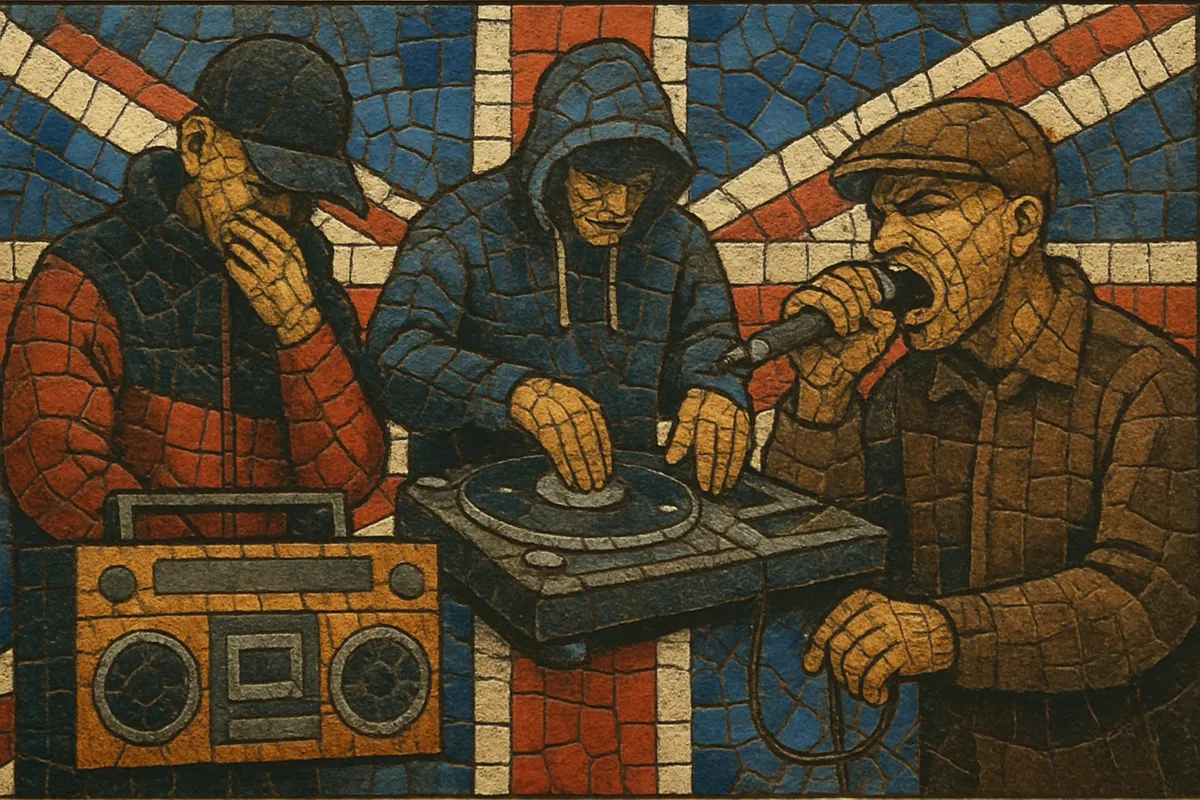Britcore is a fast, hard-edged strain of UK hip hop that emerged in the late 1980s and peaked in the early 1990s. It is characterized by high-tempo breakbeats, aggressive delivery, dense scratching, and dark, cinematic samples.
Compared to U.S. boom-bap of the same era, Britcore typically runs hotter and louder: tempos often push past 105–120 BPM, drums hit with clipped, 12‑bit grit, and choruses frequently feature turntable cuts or shouted hooks. Lyrically, it blends street reportage, anti-authoritarian themes, and sharp UK vernacular, foregrounding British identity over American emulation.
Sonically, expect sirens, orchestral stabs, horror-funk loops, and relentless DJ techniques. The result is a raw, high-pressure sound that bridged UK hip hop with the breakbeat culture that would soon power jungle and, later, grime.
Britcore formed as a distinct UK response to hip hop, drawing on U.S. old-school and boom-bap while asserting a uniquely British voice. Independent labels, pirate radio, and sound system culture gave crews access to breakbeats, 12-bit samplers, and turntables. Early sides by acts like Hijack, Hardnoise, and Demon Boyz crystallized the blueprint: faster tempos, darker samples, and aggressive, virtuosic scratching.
By the turn of the 1990s, a core scene coalesced around crews such as Gunshot, London Posse, Katch 22, Blade, Silver Bullet, and Overlord X. Releases on indie imprints (and occasional major-label forays, as with Hijack’s U.S. Rhyme Syndicate link) spread the sound across the UK and mainland Europe. Production leaned on gritty SP‑1200/S950 workflows, looped funk breaks, orchestral/horror cues, and sirens, while DJs delivered dense cuts and battle-ready routines.
As breakbeat hardcore and the rave scene exploded, some producers and DJs straddled both worlds. The speed and aggression of Britcore’s breaks and the crowd-hyping role of the MC translated naturally to the emerging rave spectrum, prefiguring the rapid-fire toasting heard in jungle and shaping the idea of the UK MC as a front-and-center force.
By the mid-1990s, the style’s commercial presence waned as UK rap diversified and new sounds (trip hop, jungle, later grime) took focus. Yet Britcore’s DNA—fast breaks, rough sonics, and uncompromising UK identity—echoed through jungle MC culture, the darker edges of drum and bass, and the MC-led intensity of grime. Its ethos also fed the UK’s enduring underground hip hop tradition.


